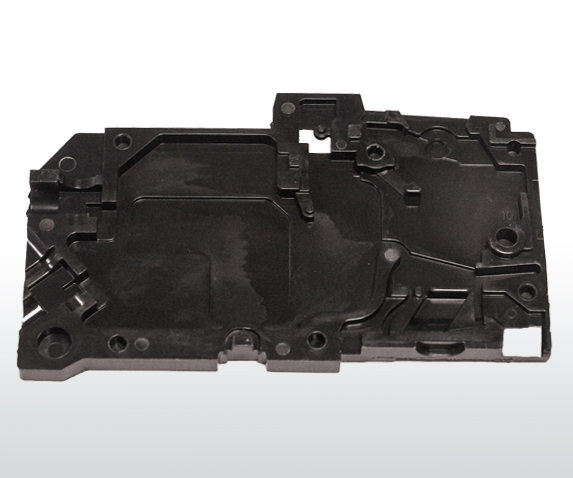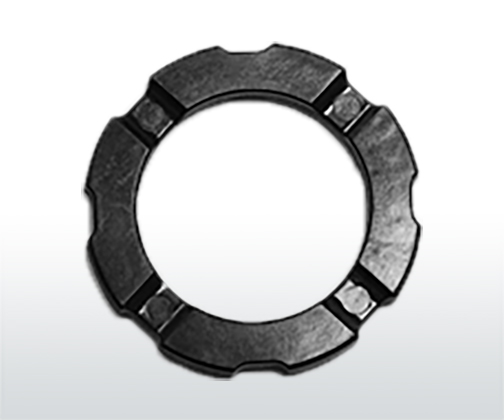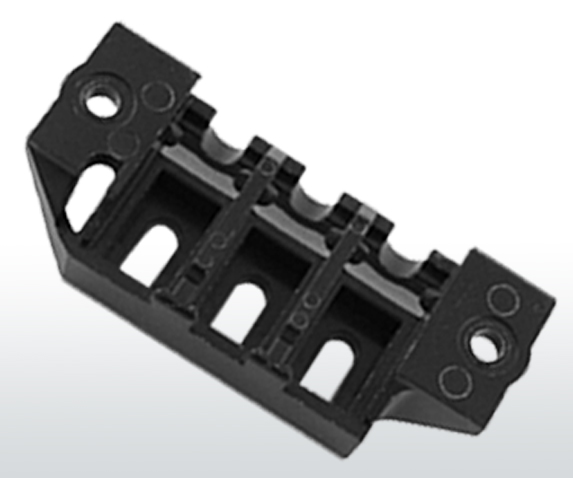Category Archive: Thermoset Molding
As engineers and product designers continue to try and maximize efficiency and minimize costs in existing or new product applications, thermosets are an excellent material conversion option for high-performance, price-sensitive applications that are currently manufactured in metallic materials. Whether converting for cost reductions, material performance improvement, or expanding capacity, thermoset composites are allowing engineers to “do more with less” within new and existing product applications. (more…)
By utilizing a molding process, OEMs and manufacturers are able to design parts into complex geometries to meet the needs of the end product. This design flexibility allows part designers to implement more features into a part design, consolidate multiple parts of an assembly, and reduce overall manufacturing costs for a product assembly. Along with the availability to design intricate and complex design geometries, manufacturers are also able to implement inserts into a molded part for a variety of reasons, most typically to use as a threaded fastener to join multiple parts of an assembly together. Inserts can be designed to be molded-in during the molding of the part, or they can be tapped and/or installed in a secondary operation after molding. Depending on the part and assembly requirements, each option has its own benefits and advantages. Below are two main types of inserts used within molded thermoset parts. (more…)
One of the main benefits of using thermosets as a molding material for parts and components is the heat resistance and high temperature deflection properties that thermoset materials offer. Whereas thermoplastic molding materials such as a nylon or ABS can disfigure, melt, or carbonize; parts molded from a thermoset remain dimensionally stable, allowing the molded component or assembly to remain durable over the lifespan of a product even when exposed to elevated operating temperatures up to 400 or 500 degrees Fahrenheit. If your part or product assembly must withstand high operating temperatures and aggressive end-use elements, choosing a thermoset as your molding material may help keep your product assembly safe and functioning correctly. (more…)
Thermoset plastics have been widely used in manufacturing for parts requiring protection against high operating temperatures and electrical currents. From the historic bakelite materials to new age composite formulations used in advanced automotive, aerospace, and electrical markets; thermosets are a material of choice for challenging applications and aggressive operating elements. Aside from determining the correct material to make a component from, engineers and molders must take into consideration the best manufacturing process to use for their application. As a molding material, thermoset plastics may be injection, compression, injection-compression hybrid, and transfer molded; with each different molding process providing certain benefits and disadvantages such as cost, throughput, and material properties.
Why Injection Mold Thermosets?
The single biggest advantage of injection molding thermosets compared to a compression molding process for example, is the increase in production throughput an injection molding process can achieve. High volume programs requiring long or continuous production runs benefit from faster cycle times injection molding provides over compression molding. The increase in throughput allows molders to produce more parts in a given day or hour, allowing further capacity on a machine for other jobs to run. Injection molding can also allow for designing a mold or tool with higher cavitation than a compression process. Thermoset injection molders can offer a lower unit cost on a component or part based on running more parts in an hour through higher cavitation tooling. Industries that rely on thermoset injection molding for higher throughput include the automotive, electrical, and appliance markets; all of which can require millions of parts annually to meet production requirements.
Thermoset and thermoplastic materials are two types of plastic or composite molding materials.
While both have a similar end-product appearance of a plastic part, the two material types can have drastically different material performance properties. Choosing the correct molding material type depends on the end use application and what material property requirements the end-product needs to withstand to function properly and ensure safety. While thermoplastic materials are much more commonly used, applications requiring further material performance in the areas of electrical strength, heat resistance, and chemical resistance are likely to rely on thermosets as the molding material of choice. (more…)
Curious which industries use thermoset materials within molded components and product assemblies? While many different end markets and consumer industries rely on thermosets’ material property benefits for manufactured components and products, the electrical industry is one of the largest end-use industries for molded thermoset parts. Electrical products benefit from molded thermosets’ superior electrical properties at competitive price points for raw material compared to engineered thermoplastics. Engineers and product designers utilize thermosets into component designs and product assemblies not only for material performance, but also with product safety assurance in mind. (more…)
With supply chain costs rising on everything from raw materials to the freight of finished goods, manufacturers and engineers must keep in mind the overall manufacturing costs that affect an end-product or assembly. One option to keeping an OEM’s product assembly competitively priced in the market is rethinking the best material to produce the product assembly. Increased raw material costs for metals are continuing to position alternative manufacturing materials such as thermoset plastics in a role for existing product conversions to reduce manufacturing costs while keeping optimum product performance. (more…)
There are two main types of plastics: Thermoplastic and thermoset. Thermoplastic materials are more common molding materials such as nylon, ABS, polypropylene, and polycarbonate, among others. These thermoplastics are generally used in more price-sensitive components that do not require improved material performance properties. Thermoset plastics on the other hand are heat-stable materials suitable for components that operate in aggressive environments including high temperatures, outdoor, electrical applications. Utilizing a thermoset material within a molded product gives the end part stability in such elements, allowing the product assembly to remain durable over the life of the product and ensure its safety during operating use. Compared to thermosets, many thermoplastics will degrade in high temperatures or outdoor environments, jeopardizing the integrity of the product assembly and internal components. (more…)
Although molded thermosets have history dating back to the original bakelite plastics created by Leo Baekeland in 1907, current views of thermoset plastics, or composites, are as a niche material suitable for performance-forward applications requiring additional protection against elevated temperatures, electrical current, corrosion, and chemical exposure over traditional thermoplastics such as Nylons, Polypropylenes, ABS, and others. Whereas these types of thermoplastic materials and their properties may degrade or become compromised during use, the material properties of thermosets allow molded components to remain strong and durable under such conditions and environments, allowing products to remain safer for product users and last longer in the market or field before needing to be discarded or replaced. (more…)
As a performance-based molding material, thermosets offer strong material properties for molded parts and components such as heat resistance, chemical resistance, and excellent electrical and insulation performance. Aside from the above property benefits, molded thermosets also provide superior resistance to corrosion over metal and many thermoplastic material solutions, making thermosets a material of choice for applications exposed to moisture, water, steam, condensation, and other wet environments. Whereas a metal or thermoplastic product assembly may be susceptible to corrosion or rust in wet environments, potentially jeopardizing the integrity of a product assembly or its internal components; parts and components molded with a thermoset will remain strong and durable, and ensuring user safety during operation and use of the product throughout its life span. (more…)
Page 3 of 8«12345...»Last »







